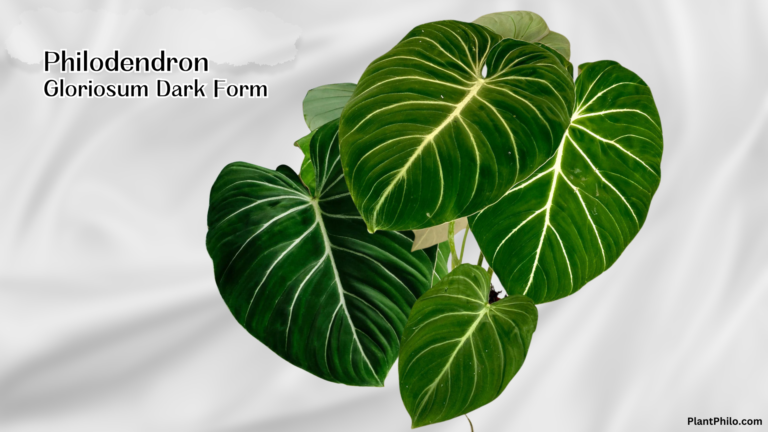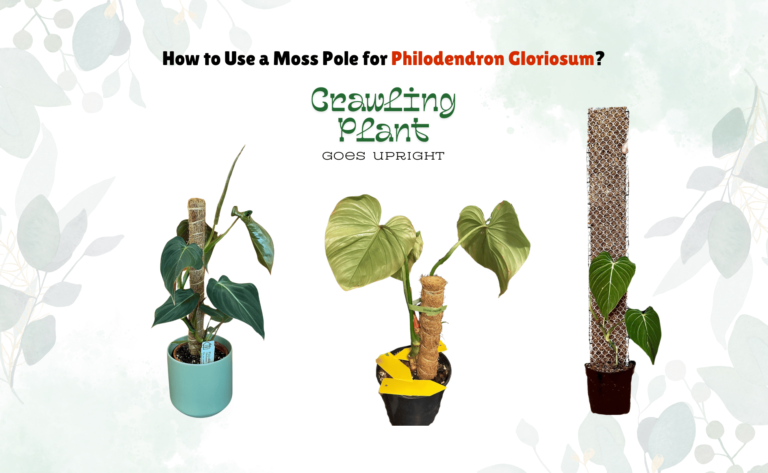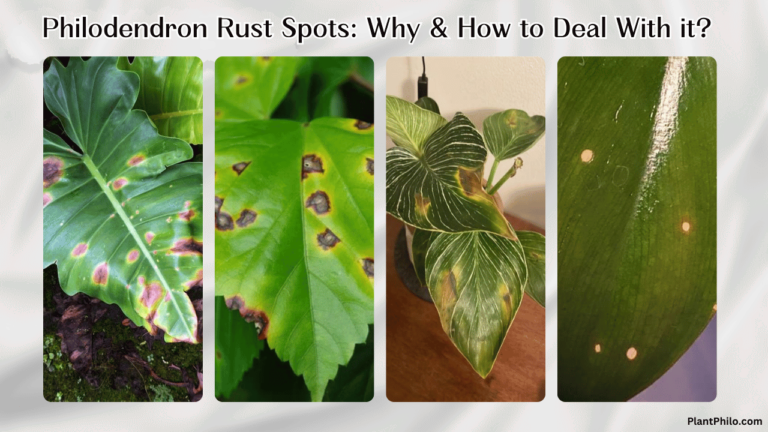Pastazanum Information on Philodendron: Essential Facts and Care Guide
Philodendron pastazanum is a crawler plant known for its large, heart-shaped leaves and attractive appearance. This terrestrial plant grows along the ground, with its main stem stretching across moist areas, valleys, and even cliffs.
Its glossy, sometimes silver-splashed foliage makes it stand out among other houseplants you might see.

As a rare species, Philodendron pastazanum often attracts collectors and plant lovers who want something unique for their indoor garden. Its leaves can grow quite large under the right conditions, and the plant thrives in well-draining, nutrient-rich soil.
If you’re interested in adding a striking, low-growing aroid to your collection, this plant is likely to catch your attention with its bold look and manageable care needs. For more information on its natural habitat and features, you can read about Philodendron pastazanum on Plants of the World Online at Kew.
Taxonomy and Origins

Philodendron pastazanum holds a unique place in plant classification. It has a very specific natural range in South America and features distinct varieties that enthusiasts have developed and identified.
Each of these topics helps highlight the details that make this plant stand out among other philodendrons.
Classification of Philodendron Pastazanum
Philodendron pastazanum belongs to the Araceae family, sometimes called the “arum family.” Members of this family are known for their spadix and spathe, which are specialized floral structures.
The genus is Philodendron, which includes hundreds of species.
Its scientific classification is as follows:
| Rank | Name |
|---|---|
| Family | Araceae |
| Genus | Philodendron |
| Species | Philodendron pastazanum |
Taxonomists use certain leaf shapes, growth habits, and floral features to group this plant. The heart-shaped leaves, also called “cordate,” help identify it, especially when compared to other philodendrons.
More on its classification details can be found at Plants of the World Online.
Native Habitat and Distribution
Philodendron pastazanum is native to a small region of South America. Its natural range includes Ecuador and Peru.
It prefers to grow in the wet tropical biome, often in the understory where it’s humid and warm. In the wild, it grows as a climber, using other plants or trees for support.
The humid rainforest creates ideal conditions for its large leaves and spreading roots. This species is not widespread outside its home range, making it fairly rare in nature.
Notable Varieties and Cultivars
Philodendron pastazanum is often grown for its ornamental leaves with deep veins. While the standard form is most common, there are unique varieties and cultivars with special features, such as more silvered leaf patterns or different growth forms.
Some cultivars may have slightly different coloration or leaf texture, but all share the classic heart shape and glossy finish. A few hobbyists have selected these traits over many generations of plants.
For those interested in exploring or acquiring such plants, Ecuagenera USA offers several Philodendron pastazanum options for home collections.
Distinctive Features

Leaf design, vivid color, and an interesting growth cycle are important for anyone caring for this plant.
Leaf Structure and Growth Patterns
The leaves of Philodendron pastazanum are large and heart-shaped. These leaves often grow elongated and can reach impressive sizes, making them a bold focal point indoors.
New leaves tend to emerge on long petioles, standing upright before settling horizontally as they mature. The surface of each leaf is slightly glossy and feels smooth.
Mature leaves show deep indentations along the veins and have a prominent midrib. Each leaf can span up to 18 inches or more when grown in the right environment.
This plant is considered a climber, but it often stays low, spreading out on the soil unless given support. As it grows, it produces long, creeping stems called rhizomes, which root at the nodes and allow for new growth points.
Coloration and Markings
The color of the Philodendron pastazanum foliage is a deep, rich green. New leaves appear with a paler or even yellowish hue, then darken as they age.
The main veins are lighter in color, clearly standing out against the darker background. There are sometimes silvery or white markings that highlight the veins.
This venation adds visual texture and is one of the features that plant collectors admire the most. In some cultivars, variegated tissue appears as streaks or patches, creating a mosaic pattern across the leaf surface.
The contrast in colors between the veins and main body of the leaf helps to make this plant instantly recognizable. In the right light, the reflective leaf surface gives the plant a delicate sheen, enhancing its ornamental value.
Growth Cycle
The growth of this species is steady under suitable conditions. The biggest flush of new leaves usually appears during the warmer, wetter months.
Each leaf unfurls slowly over a period of several days, expanding to full size. Philodendron pastazanum is classified as a perennial, so it grows and produces new foliage year after year if kept healthy.
Unlike some Philodendrons that climb quickly, this one remains more compact and spreads horizontally. Roots develop along creeping stems, anchoring the plant and supporting more growth.
With the right care, mature specimens produce multiple large leaves at once, giving the plant a lush, almost tropical look.
If you want more details about this species’ background and habitat, you can read about its native range from Ecuador to Peru.
Cultivation Best Practices
When growing Philodendron pastazanum, it is important to pay close attention to lighting, soil, watering, and feeding. This ensures healthy foliage and steady growth.
Light and Temperature Requirements
Philodendron pastazanum thrives in bright, indirect sunlight. Too much direct sun can burn the leaves, while too little light slows growth and causes pale foliage.
South or east-facing windows with filtered light work best. The ideal temperature range for this plant is between 65°F and 80°F (18°C to 27°C).
Sudden temperature changes should be avoided, and the plant should be kept away from cold drafts or heat sources. Humidity is also important.
Maintain at least 60% humidity to prevent the leaves from drying out. A humidifier or a tray of pebbles with water can help keep the air moist.
Soil and Potting Recommendations
Philodendron pastazanum thrives in a well-draining, loose soil mix. A blend of peat moss, perlite, and orchid bark allows good airflow around the roots.
This helps prevent root rot and keeps the plant healthy. The soil should be slightly acidic to neutral, with a pH of 5 to 7, as recommended by plant experts.
When repotting, choose a pot that allows extra room for growth but is not too large. The container should have drainage holes at the bottom.
Avoid overly compacted or wet soil, and make sure the soil dries out between waterings. Repot every couple of years or when the roots fill the pot.
Watering Schedule
Use a regular but careful watering schedule for this philodendron. During the growing season (spring and summer), water when the top inch of soil feels dry to the touch.
In fall and winter, reduce watering and allow the soil to dry more before watering again. Standing water in the pot can lead to root rot, so always dump excess water from the saucer after each watering.
Never let the plant sit in soggy soil. Drooping leaves can be a sign of both overwatering and underwatering, so check the soil moisture before adding water.
Fertilization and Feeding
Fertilize Philodendron pastazanum every 4 to 6 weeks during the spring and summer with a balanced, water-soluble fertilizer diluted to half strength. Avoid over-fertilizing, which can cause leaf damage and salt buildup in the soil.
During the cooler months, feed less often, stopping completely while the plant is not actively growing. If yellowing leaves or slow growth appear, check for signs of nutrient deficiency and adjust the fertilizer as needed.
Flush the soil every few months with plain water to minimize any salt buildup from fertilizers.
Challenges and Common Issues
Proper care is key to healthy Philodendron pastazanum growth. Without close attention, these plants can face pests, diseases, and leaf damage that stop them from thriving.
Pest and Disease Management
Philodendron pastazanum can attract common houseplant pests like spider mites, mealybugs, and aphids. Always inspect the leaves—especially under the leaves and at the stems—for sticky residue, tiny moving bugs, or fine webbing.
If pests are present, use insecticidal soap or wipe affected leaves with a cotton swab dipped in rubbing alcohol. Isolating infested plants helps stop pests from spreading to others.
Overwatering can cause fungal diseases or root rot, so water only when the top inch of soil is dry. Keeping air moving around the plant can help prevent mold and mildew problems.
Pest and disease problems are more likely if the plant is stressed by poor lighting, soggy soil, or cramped roots. For more detailed help, see spider mites and aphids.
Pruning and Maintenance Tips
Prune Philodendron pastazanum to remove damaged, yellowing, or dead leaves. This improves the plant’s health and appearance.
Use clean, sharp scissors and always cut close to the base of the stem. Removing damaged leaves helps reduce the risk of pest problems and disease outbreaks.
Regular pruning encourages new growth by redirecting the plant’s energy. Wipe the leaves with a damp, soft cloth every few weeks to remove dust and keep them able to breathe.
If the plant grows too large for its space, careful trimming helps control its shape and keeps it tidy.
Troubleshooting Leaf Problems
When Philodendron pastazanum leaves start turning yellow, brown, or curl up, check for common causes like improper watering, lack of humidity, or too much direct sunlight. Overwatering is a frequent problem and can lead to yellowing leaves or soft, mushy stems.
Brown edges might mean dry air or underwatering. Keep the soil lightly moist and never let the plant sit in water.
A humidity level of around 60% helps prevent dry tips and edges. If dropping leaves occur, it’s often a clear sign the plant is stressed by something in its environment.
Deal with these issues early to avoid further harm. For more guidance, see common Philodendron problems.
Frequently Asked Questions
Here are important details for those interested in Philodendron Pastazanum Silver and related species.
How do I care for a Philodendron Pastazanum Silver plant?
Keep Philodendron Pastazanum Silver in bright, indirect sunlight. Water when the top inch of soil feels dry and use well-draining, chunky soil.
Humidity above 60% helps the leaves stay lush. Fertilize monthly with a balanced liquid fertilizer during the growing season.
What are the differences between Philodendron Pastazanum Silver and Philodendron Mamei?
The main difference is in the leaf shape and texture. Philodendron Pastazanum Silver usually has rounder, more heart-shaped leaves.
Philodendron Mamei has elongated, silvery leaves with visible veins and a slight ruffled texture.
How can I distinguish a mature Philodendron Pastazanum Silver from its juvenile form?
A mature Philodendron Pastazanum Silver has larger, thicker leaves with stronger silver coloring and pronounced veining. Young plants have smaller, softer leaves and the silver coloring is often less noticeable.
What are the ideal growth conditions for a Philodendron Pastazanum?
This plant grows best in high humidity and warm temperatures between 65°F and 80°F. It likes soil that drains well and stays slightly moist.
Since it is native to the wet tropical biome in Ecuador and Peru, try to mimic these conditions indoors.
How do Philodendron Pastazanum and Philodendron Gloriosum differ in terms of care requirements?
Both plants enjoy similar humidity and lighting needs, but Gloriosum prefers more horizontal space as it is a crawler rather than a climber. Pastazanum can adapt to climbing supports, while Gloriosum needs a wide pot and room to spread out.
What are the characteristics of a Philodendron ‘Paraiso Verde’ compared to a Philodendron Pastazanum?
The Philodendron ‘Paraiso Verde’ has long, narrow leaves with splashes of light green and yellow, creating a variegated look. Pastazanum Silver has broad, heart-shaped, silvery-green leaves with a smoother color pattern.
Their care is similar, but variegated types like ‘Paraiso Verde’ may need more light to keep their color.




